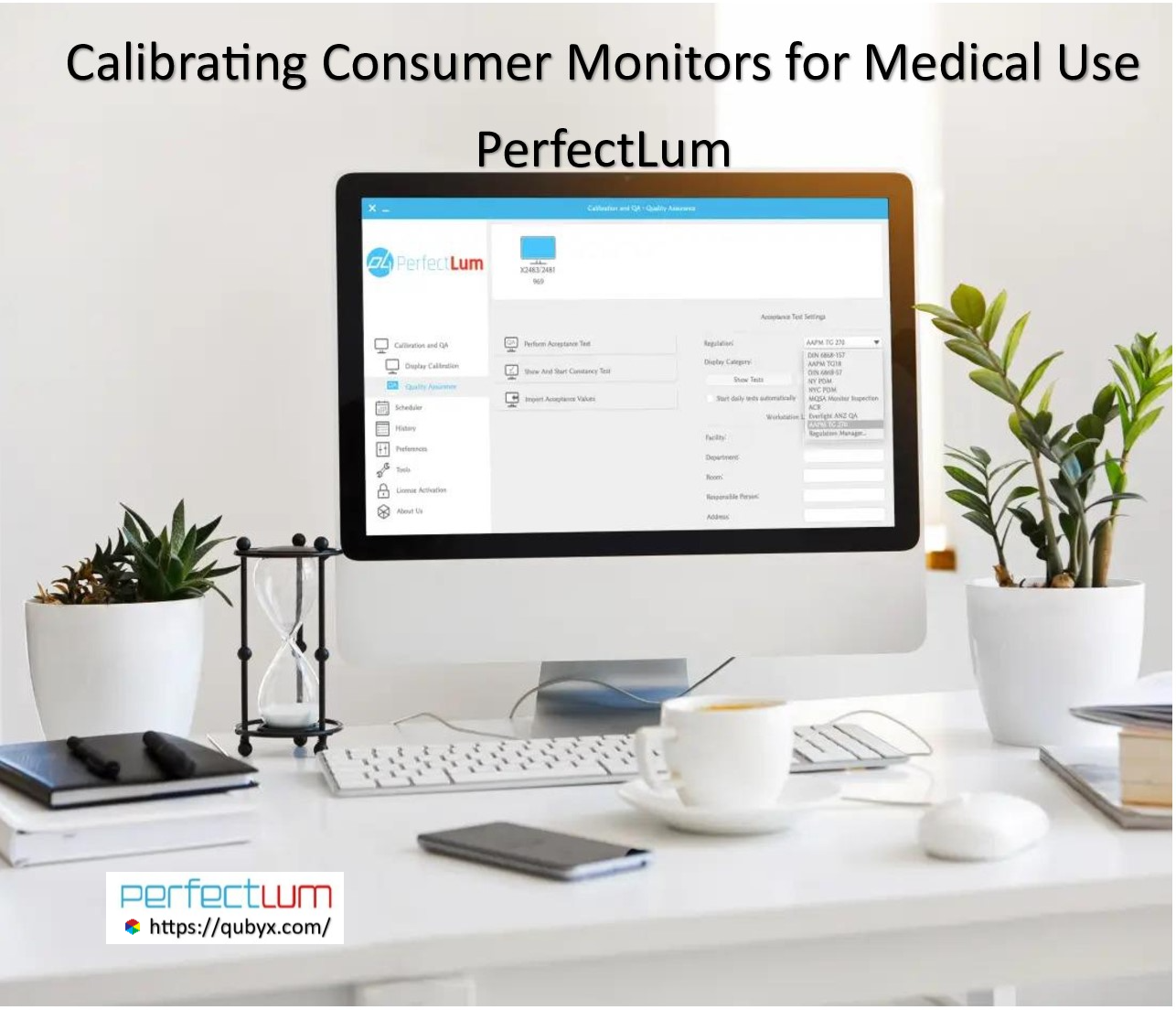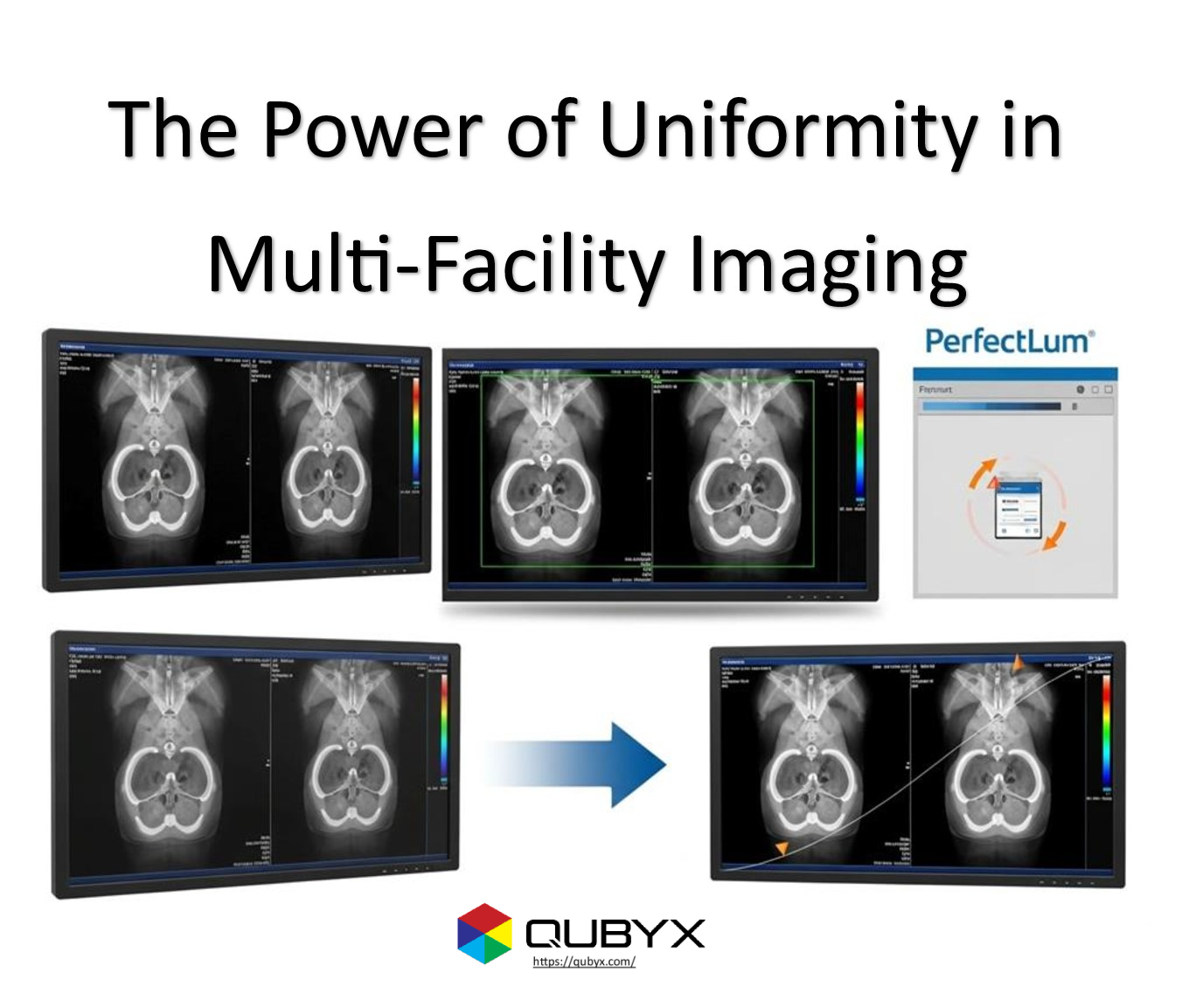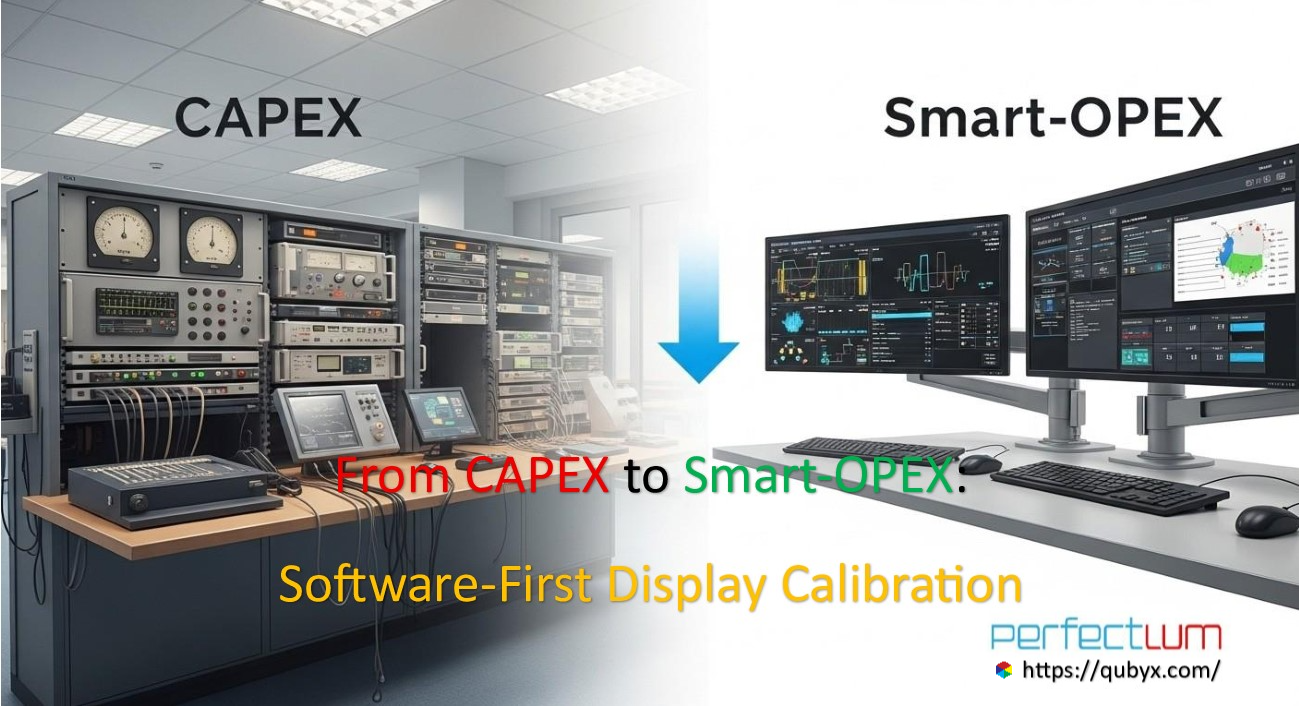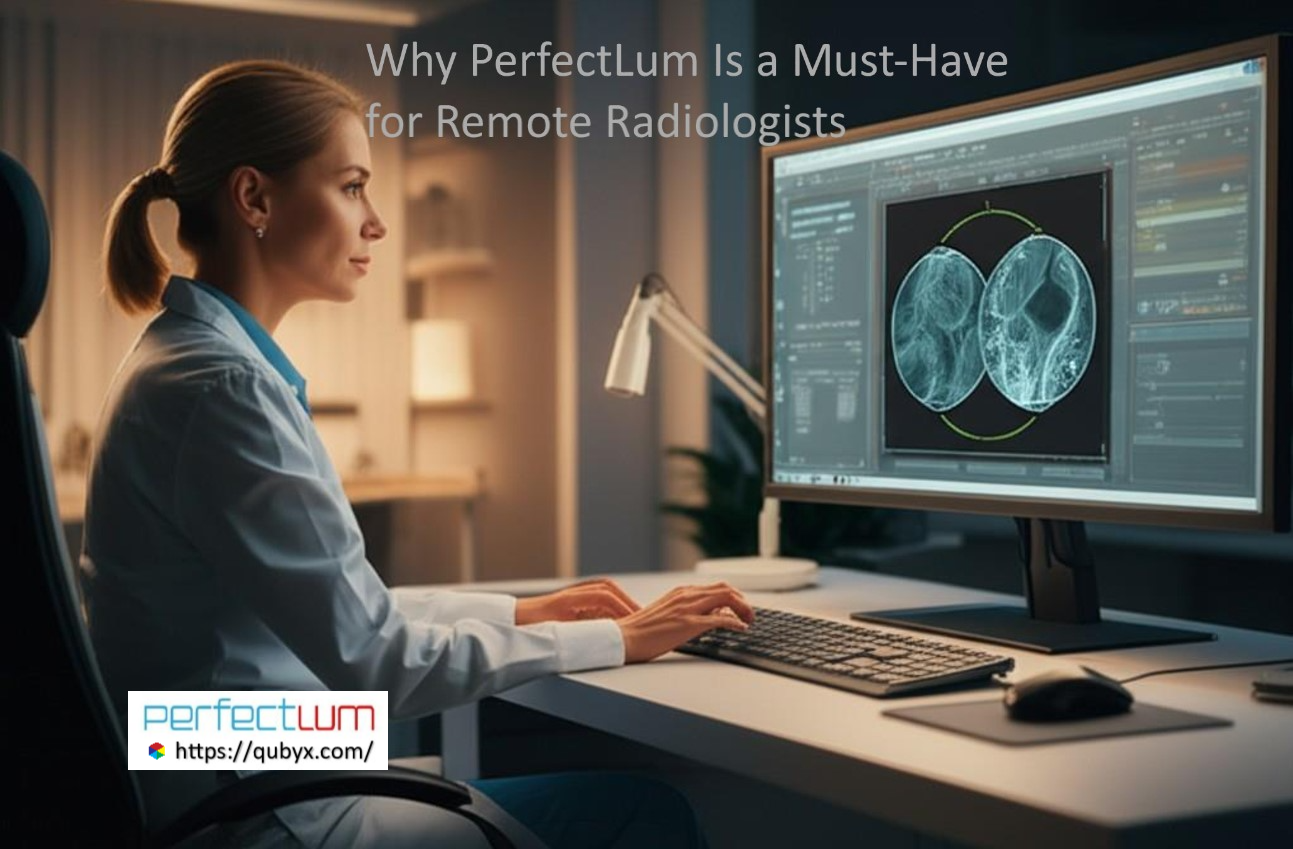News
- Home
- Calibrating Consumer Monitors Medical Use | PerfectLum

Calibrating Consumer Monitors Medical Use | PerfectLum
- October 20, 2025
- Shamsul
Calibrating Premium Consumer Monitors Medical Use with PerfectLum
Introduction: When Consumer Meets Clinical Precision
The line between consumer and professional imaging technology is blurring faster than ever. High-end consumer monitors—known for stunning contrast ratios, wide gamuts, and crisp resolution—are now being explored for medical use. But one critical question remains: Can a premium Consumer Monitors Medical Use perform like a certified diagnostic monitor?
The answer lies in PerfectLum, the software-first calibration and quality assurance solution by QUBYX LLC, which bridges the gap between consumer hardware and medical-grade accuracy and turn Consumer Monitors Medical Use. With DICOM calibration for LCD panels, PerfectLum transforms capable consumer monitors into affordable radiology displays—offering hospitals, clinics, and research institutions a breakthrough in cost efficiency.
Understanding the Calibration Challenge
Medical imaging is defined by precision. Every shade of gray in an X-ray or CT scan carries diagnostic meaning. Traditionally, this level of accuracy required expensive, proprietary monitors with built-in hardware calibration sensors and compliance with DICOM Part 14 GSDF standards.
Consumer monitors, despite having exceptional specs, lack the native calibration curves and luminance control necessary for diagnostic use. Without proper calibration, two identical images could appear drastically different—introducing risk into the diagnostic chain.
This is where PerfectLum’s software-first approach changes the game and turn Consumer Monitors Medical Use.
PerfectLum’s Core Advantage: DICOM Accuracy Without Hardware Lock-In
PerfectLum enables software-level DICOM calibration on almost any display, allowing hospitals and imaging centers through Consumer Monitors Medical Use to:
-
Apply GSDF (Grayscale Standard Display Function) curves directly to the display LUT.
-
Conduct automated QA tests per AAPM TG18, DIN 6868-157, and IEC 62563 standards.
-
Maintain uniform luminance response across multiple screens or workstations.
-
Integrate seamlessly with Windows, macOS, and Linux for enterprise-wide deployment.
Turn Consumer Monitors Medical – UseThis means even a premium consumer monitor—such as those from Dell UltraSharp, LG UltraFine, or ASUS ProArt series—can be precisely calibrated for radiological review, research, or secondary diagnostics.
The “Any Display” Compatibility: PerfectLum’s Hardware Freedom
Unlike vendor-locked calibration systems, PerfectLum is engineered for universal compatibility and turn Consumer Monitors Medical Use. It supports:
-
All major display connection types (HDMI, DisplayPort, USB-C).
-
Common calibration sensors (X-Rite, Datacolor, Klein, and more).
-
Both internal LUT and GPU LUT adjustments.
-
Monitors used for teleradiology, pathology image review, 3D reconstruction, and medical education.
This universality empowers healthcare providers to re-purpose high-quality consumer displays they already own—without compromising on diagnostic reliability.
Turn Consumer Monitors Medical Use | Cost Efficiency Without Compromise
Upgrading imaging infrastructure can be prohibitively expensive. A certified medical-grade display may cost 5–10 times more than a high-end consumer monitor. However, when paired with PerfectLum, hospitals can achieve the same DICOM-compliant output at a fraction of the price.
Example scenario:
-
Traditional medical display: USD $3,500–$5,000
-
Premium consumer monitor + PerfectLum license: USD $900–$1,200
That’s a cost reduction of nearly 70–80%, while still achieving full DICOM GSDF compliance, long-term QA stability, and centralized audit tracking for compliance reports.
The PerfectLum Workflow | Turn Consumer Monitors Medical Use
Here’s how the calibration and QA workflow looks in practice:
-
Display Detection: PerfectLum automatically identifies connected monitors and their specifications.
-
Sensor Connection: The user attaches a supported external sensor for precise luminance and chromaticity measurements.
-
Calibration Execution: The software applies DICOM GSDF curves to the GPU or internal LUT, adjusting brightness and contrast dynamically.
-
Verification Test: QA patterns (TG18-QC, SMPTE, etc.) are displayed for visual and quantitative verification.
-
Compliance Report: A digital calibration certificate is generated for regulatory documentation.
This process ensures repeatable accuracy and supports hospital IT departments with full traceability—essential for ISO and FDA compliance.
Ideal Use Cases for Calibrated Consumer Monitors | Turn Consumer Monitors Medical Use
While primary diagnostic reading should always use certified medical displays, PerfectLum-calibrated consumer monitors are ideal for:
-
Radiologist home offices (remote reading setups).
-
Resident training environments.
-
Telemedicine and teleradiology applications.
-
Research and image review labs.
-
Clinical administration and case conferencing.
Turn Consumer Monitors Medical Use This approach offers a hybrid model: premium performance, compliance-ready calibration, and substantial cost efficiency.
Why Hospitals Are Adopting the “Software-First” Approach
The global shift toward software-based calibration reflects a wider trend in healthcare IT—reducing reliance on proprietary hardware ecosystems. PerfectLum aligns perfectly turn Consumer Monitors Medical Use with this movement by offering:
-
Scalable deployment: Centralized control across dozens of displays.
-
Regulatory confidence: Audit-ready compliance with DICOM, DIN, and AAPM standards.
-
Budget optimization: Extended lifecycle of consumer monitors already in use.
-
Sustainability: Reduced electronic waste through re-purposing of existing hardware.
Turn Consumer Monitors Medical Use | Redefining Affordability and Accuracy
The era of needing specialized, vendor-locked displays for medical imaging is fading. With PerfectLum, hospitals can achieve DICOM accuracy, quality assurance, and cross-platform compatibility—on any premium consumer monitor.
In a world where every pixel matters, PerfectLum proves that software innovation can deliver clinical precision without financial compromise. It’s not just calibration—it’s the democratization of diagnostic imaging.
To secure medical-grade display precision while reducing the recurring costs of proprietary hardware, the answer is clear: transition to a Calibration Software platform like QUBYX OS Tools (Free) and PerfectLum today.
Tags:
consumer monitor medical use, affordable radiology display, DICOM calibration for LCD, PerfectLum compatibility, GSDF calibration, software-first calibration
Related Posts
- October 26, 2025
- News
The Power of Uniformity | How PerfectLum Solved a Multi-Facility
- October 25, 2025
- News
From CAPEX to Smart-OPEX: Shifting Hospital Calibration Spending with Software
- October 25, 2025
- News
Cost-Effective Software by QUBYX to Help You Thrive Executive summary




